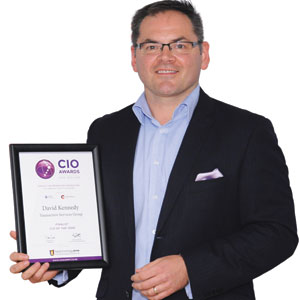THANK YOU FOR SUBSCRIBING
Editor's Pick (1 - 4 of 8)

The Architecture of Connectivity Building Communities in the Age of Smart Cities
Gregory Kovacs, Design Director, Benoy Hong Kong

The history of technology and urbanisation are inextricably linked. Cities are the incubators of innovation. At the same time, innovation enables cities to evolve and grow. Cities are arguably the most complex of all manmade objects; yet their complexity exceeds the capacity of human comprehension.
In recent years, science and systems engineering have employed computation to predict the behaviour of other complex systems with increasing reliability – the spread of disease, the weather, climate change. And today, the same tools enable us to gain an unprecedented understanding of our cities and devise interventions to improve their fabric, form and function.
They say data is the new oil; and nowhere is this more evident than in the development of smart cities, where data is harvested and deployed to manage assets and resources more efficiently. Responsive street lighting, optimised transport networks, enhanced waste management and reduced bureaucracy are just some of the many benefits of data-driven urban technology.
Around the world, private sector investment and government initiatives are driving smart city innovations. In London, UK, SmartPark solutions help drivers find parking spaces in the capital. In Toronto, Canada, The Sidewalk Labs masterplan provides a blueprint for improving city life through weather-adapting technology and urban mobility schemes. And in Hangzhou in Eastern China, tech giant Alibaba’s AI platform, City Brain, is rapidly reducing road congestion, with the megacity dropping from fifth to 57th on China’s list of most congested cities. It is an area of innovation that is growing in value globally – with the smart cities market size projected to reach an estimated $717.2 billion by 2023.
According to some, this rapid digitalisation of city infrastructure is an existential prerequisite. “In the long run,” says Dr Stefan Hartung from Bosch, “cities without intelligence will not survive”. This may, on a certain level, be true. But what is the social cost of this creeping permeation of data and tech into every aspect of urban life? Can smart cities help to strengthen community engagement and social bonds in the 21st century? And how can we avoid the dystopian visions of isolated individuals governed by ever more efficient algorithms?
Only the lonely
While we might not yet know the long-term effect of smart cities on the lives of their inhabitants, what we do know is that digital technology, for all its virtual connections and communities, can have an isolating influence.
In Japan, a highly technologically advanced country, over half a million people, known as hikikomori, live in social isolation. According to a government survey, roughly 541,000 people (1.57 percent of the population – although experts believe the total to be much higher), live as modern-day hermits, withdrawn from all social contact and, in some cases, not leaving their houses for years.
In recent years, science and systems engineering have employed computation to predict the behaviour of other complex systems with increasing reliability – the spread of disease, the weather, climate change











